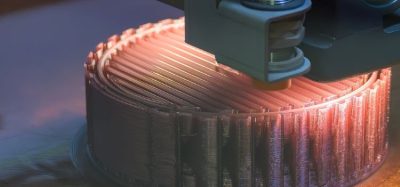Seizures could be stopped and prevented with implanted electronic device
Posted: 30 August 2018 | Iqra Farooq (European Pharmaceutical Review) | No comments yet
Researchers have developed an electronic device which could help to detect, prevent and stop seizures from occurring in epileptic patients…


Scientists have developed a method to detect, prevent and stop epileptic seizures using an electronic device implanted into the brain.
Researchers form the University of Cambridge, the École Nationale Supérieure des Mines and INSERM in France worked together in this study to implant the device into the brains of mice. When signals of a seizure were detected, a native brain chemical was delivered which stopped the seizure from progressing.
The scientists suggest that this procedure could also be adopted in other conditions, including Parkinson’s disease and brain tumours. The scientists’ work represents the advancement in the development of soft, flexible electronics that interface well with human tissue.
“These thin, organic films do minimal damage in the brain, and their electrical properties are well-suited for these types of applications,” said lead researcher Professor George Malliaras, the Prince Philip Professor of Technology in Cambridge’s Department of Engineering.
With epileptic drugs not preventing seizures in 30 percent of patients, a different approach is necessary to treat patients with epilepsy. In most epileptic patients, neurons begin signalling to neighbouring neurons to fire signals, which begins a snowball effect. This can affect motor control or consciousness.
The scientists used a neurotransmitter which acts as a ‘brake’ and signals to neurons to stop firing signals, therefore ending the seizure. The drug is delivered to the affected region of the brain, using a neural probe, an ion pump and electrodes that monitor neural activity.
As the electrodes detect changes in the neural signalling activity of the neurons, the ion pump is activated, which creates an electric field that moves the drug across the ion exchange membrane and out of the device. The amount of the drug administered can be controlled by tuning the strength of the electric field. This process is known as electrophoresis.
“In addition to be being able to control exactly when and how much drug is delivered, what is special about this approach is that the drugs come out of the device without any solvent,” said lead author Dr Christopher Proctor, a postdoctoral researcher in the Department of Engineering. “This prevents damage to the surrounding tissue and allows the drugs to interact with the cells immediately outside the device.”
The researchers observed how seizures could be prevented with less than 1 percent of the amount of drug loaded into the electronic device. This means that the device can be used for extended periods of times without needing to refill. The drug, a neurotransmitter native to the body, was taken up by natural processes in the brain within minutes, and as such, the researchers suggest that this should reduce side effects of the treatment.
The researchers aim to study long-term effects of this process in mice, and as such, the treatment will not be available to human for several years.
Prof Malliaras is looking to establish a new faculty at the University of Cambridge which will be able to prototype the specialised devices, which could be used for multiple conditions. Despite the device being tested in an animal model, the same technology could be used for other neurological conditions.
The study was published in the journal Science Advances.
Related topics
Drug Delivery Systems, Drug Development, Drug Targets, Research & Development (R&D)
Related organisations
École Nationale Supérieure des Mines, INSERM, University of Cambridge









